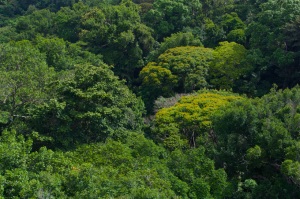
Immediate opening at the Smithsonian Tropical Research Institute (STRI) for an intern / fellow / research assistant to collect high-resolution aerial photos with unmanned aerial vehicles (UAVs). Responsibilities will include assembly of UAVs, maintenance and repair of UAVs, weekly operation of UAVs to collect images, processing of collected images, collection of auxiliary field data (e.g., linking tagged trees with crowns visible on images), data analysis, and contribution to scientific publications. Data collection will be focused in the Agua Salud experiment and the Barro Colorado Nature Monument (especially the 50 ha forest dynamics plot on Barro Colorado Island and long-term experimental plots on Gigante peninsula). The successful candidate will work with staff scientist Helene Muller-Landau and collaborators, including Jonathan Dandois (http://ecosynth.org/), Lian Pin Koh (http://ConservationDrones.org), Stephanie Bohlman, Jeff Hall, S. Joseph Wright, and more. The Smithsonian Tropical Research Institute is home to a vibrant scientific community of 30 staff scientists, over 100 graduate and postdoctoral fellows, and over 500 scientific visitors per year.

The ideal candidate has experience with UAVs or demonstrated possession of relevant mechanical and electronics skills, interest in and some basic knowledge of forest ecology, past experience in field research or some other outdoorsy job or pastime, experience using GPS, experience with GIS and remote sensing software, basic programming skills (e.g., Python, R, Matlab, or C++), a bachelor’s degree in a relevant field, good English communication skills, at least basic Spanish communication skills, a driver’s license, and ability to drive a vehicle with manual transmission. The start date is flexible, but would ideally be as soon as possible, and no later than December 1.
This position will be compensated with a modest stipend sufficient to cover living expenses in Panama (minimum $800/month; negotiable). Initial appointment is for one year (minimum commitment of 9 months is required), and is renewable contingent on satisfactory performance and availability of funds.
To apply, please email a cover letter describing your qualifications and interest in the position, CV, and contact information for 3 references to Helene Muller-Landau at mullerh@si.edu. Review of applications will commence on September 15, 2013, and continue until the position is filled.
